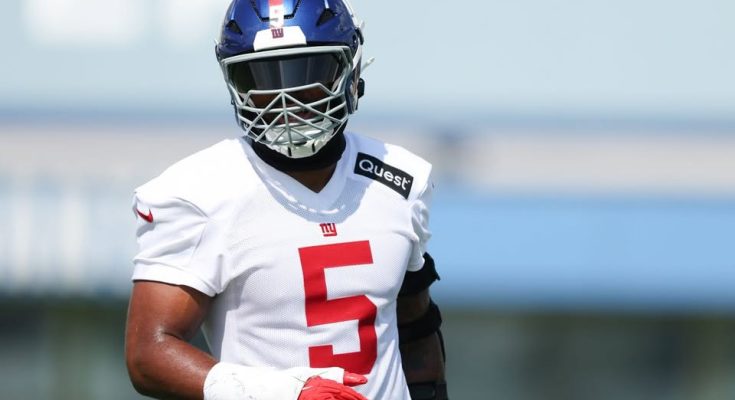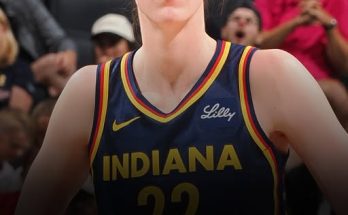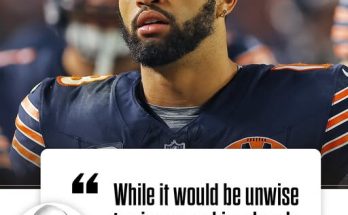The crisp autumn air of East Rutherford, New Jersey, is already beginning to hum with anticipation. Another NFL season is on the horizon, and for the New York Giants, much of that hum centers around one player: Kayvon Thibodeaux. The fifth overall pick in the 2022 NFL Draft, Thibodeaux arrived in the Big Apple with immense expectations, a blend of explosive athleticism, a relentless motor, and a charisma that instantly captivated the fanbase. His journey thus far has been a testament to both his prodigious talent and the inherent challenges of translating elite college production into consistent NFL dominance. As we look towards the 2025 season, the narrative around Thibodeaux is shifting, evolving from raw potential to refined execution, and a key phrase emerging from his offseason work offers a profound insight into his developmental focus: “wrestling to finish.”
This isn’t just a catchy phrase; it’s a strategic philosophy, a nuanced approach to an age-old problem for pass rushers. For Thibodeaux, and indeed for many NFL defensive ends, getting to the quarterback isn’t always the issue. It’s the final, decisive act – the sack itself – that often proves elusive. The margin for error in the NFL is microscopic. Quarterbacks are elite athletes, trained to react in milliseconds, possessing incredible pocket awareness and the ability to shed contact or release the ball just as the rusher arrives. Those near-sacks, those “half-sacks” as Thibodeaux himself termed them after a frustrating 2024 season that saw him miss five games due to a wrist injury, are the ghost in the machine of defensive line play, the tantalizing glimpses of what could be, but ultimately, what wasn’t.
In 2023, Thibodeaux had a career-high 11.5 sacks, demonstrating flashes of the dominant player everyone envisioned. However, his 2024 campaign, hampered by the wrist injury, saw that number drop to 5.5 in 12 games. Yet, the underlying pressure numbers, the quarterback hits, remained high, suggesting that while he was disrupting, he wasn’t always finishing. This is where the concept of “wrestling to finish” comes into play, a tangible and tactical adjustment aimed at converting disruption into definitive impact.
The origins of this concept for Thibodeaux can likely be traced back to his own self-assessment and the collaborative efforts of the Giants’ coaching staff, particularly defensive line coach Andre Patterson and outside linebackers coach Charlie Bullen. They’ve identified a critical juncture in the pass rush: the moment of contact with the quarterback. It’s not enough to simply beat the offensive lineman. The engagement with the quarterback demands a different set of skills, a different kind of physicality.
Think about the dynamics of a wrestling match. It’s a sport of leverage, balance, hand fighting, and relentless drive. Wrestlers are constantly working to gain a positional advantage, to break down their opponent’s base, to control their body, and ultimately, to drive them to the ground and secure the pin. These are precisely the elements that translate seamlessly to the final phase of a pass rush.
Consider the typical sequence of a pass rush. An edge rusher explodes off the line, employs a series of meticulously drilled moves – a rip, a club, a swim, a spin – to defeat the offensive tackle. They get a step, perhaps gain the edge, and are now bearing down on the quarterback. This is often where the “finish” breaks down. The quarterback might step up, slide, or even brace for impact, presenting a moving target with surprising strength and agility. A simple arm tackle, a missed grab, or a loss of balance by the rusher can negate all the hard work that preceded it.
“Wrestling to finish” addresses this crucial moment. It emphasizes:
- Hand Combat and Grip Strength: Just as a wrestler battles for hand control, a pass rusher needs to establish dominant hand placement on the quarterback. This isn’t just grabbing a jersey; it’s about latching on, controlling the torso, and preventing the quarterback from escaping. This requires immense grip strength, developed through specific training exercises like farmers’ carries, plate pinches, and various forms of pulling.
- Leverage and Hip Drive: A wrestler uses their hips to generate power and drive their opponent. Similarly, a pass rusher needs to get their hips involved in the tackle, driving through the quarterback’s core rather than just reaching with their arms. This means maintaining a low center of gravity, staying powerful through contact, and using their entire body to complete the tackle. Drills that focus on hip mobility, explosion, and maintaining leverage through resistance are paramount.
- Balance and Footwork through Contact: The chaotic nature of the backfield means a rusher often encounters unexpected contact, either from the quarterback or other blockers. Maintaining balance and controlled footwork through this chaos is essential to staying on their feet and finishing the play. Wrestling drills, which constantly challenge balance and force rapid adjustments, are highly beneficial.
- Controlling the Descent: The NFL has strict rules regarding roughing the passer, particularly concerning driving the quarterback into the ground or landing on them with full body weight. “Wrestling to finish” isn’t about recklessly slamming a quarterback. Instead, it’s about controlled takedowns, safely bringing the quarterback to the turf in a manner that secures the sack without drawing a penalty. This involves understanding body mechanics and the physics of impact, much like a wrestler learns to control the fall of their opponent.
- Relentless Pursuit and Second Effort: In wrestling, a match isn’t over until the pin is secured. For a pass rusher, this translates to an unyielding motor. If the initial grab isn’t perfect, or if the quarterback squirms free, the “wrestling to finish” mentality dictates a continuous effort to re-engage and complete the play. This is where the mental fortitude, the sheer will to win the rep, comes into play.
Thibodeaux’s offseason regimen has reportedly integrated specific wrestling-inspired drills. This might include grappling with training partners, working on throws and takedowns with padded dummies, or even engaging in light, controlled wrestling sessions. The emphasis would be on the principles rather than the full-contact nature of the sport, adapting them to the unique requirements of a football sack. This sort of cross-training is not new in professional sports, but its targeted application to the specific issue of “finishing” sacks highlights a sophisticated understanding of player development.
The benefits of this approach extend beyond just sack numbers. Improved tackling mechanics, enhanced body control, and increased functional strength are all direct byproducts of wrestling training. These improvements can also lead to fewer missed tackles in the run game and a greater ability to shed blocks and make plays. For a player like Thibodeaux, whose athleticism is already undeniable, this refinement of technique and physicality could unlock a new level of consistency and dominance.
The Giants’ defensive line, in 2025, is poised to be a force. The acquisition of Brian Burns last season, and the selection of Abdul Carter in the recent draft, alongside the established presence of Dexter Lawrence, creates a formidable quartet of pass rushers. This depth is critical. It means Thibodeaux won’t be the sole focus of opposing offensive lines, allowing him more one-on-one opportunities. It also means that even if he’s double-teamed, the pressure from other rushers will force quarterbacks to get the ball out quicker or hold it longer, creating more opportunities for the “wrestling to finish” technique to be deployed. The synergy between these players, all of whom possess different strengths and pass-rush styles, could make the Giants’ front truly elite.
Beyond the physical mechanics, there’s a significant mental component to “wrestling to finish.” It requires a shift in mindset, a determination to not just get close to the quarterback, but to secure him. This speaks to a deeper level of focus and execution. Elite pass rushers often talk about having a “sack mentality,” a relentless pursuit of the quarterback regardless of the obstacles. “Wrestling to finish” provides a tangible framework for that mentality, translating aggression into precision. It’s about being patient yet violent, opportunistic yet controlled.
The NFL’s increasing emphasis on player safety also plays a subtle role here. While the objective is to bring the quarterback down, the method matters. Learning controlled takedown techniques, inspired by wrestling, can help minimize the risk of dangerous hits and subsequent penalties for roughing the passer. This not only benefits the player by avoiding fines and potential suspensions but also benefits the team by maintaining defensive momentum.
Looking at Thibodeaux’s trajectory, his 2023 season demonstrated his high ceiling. The 2024 season, despite the injury, provided valuable lessons and highlighted areas for improvement. The conscious decision to focus on “wrestling to finish” suggests a mature understanding of his own game and a commitment to continuous growth. This isn’t about reinventing his entire pass-rush repertoire but rather refining the crucial final step.
The impact of this refined approach could be substantial for the Giants. A more consistent and effective Kayvon Thibodeaux translates directly to more disruptive pressure, more turnovers, and ultimately, more wins. In the modern NFL, where passing offenses reign supreme, the ability to consistently pressure the quarterback is perhaps the single most important factor for a successful defense. If Thibodeaux can convert those pressures into sacks at a higher rate, the Giants’ defense will become even more fearsome.
It’s also important to acknowledge the long-term vision. The Giants picked up Thibodeaux’s fifth-year option, signaling their belief in him as a foundational piece of their defense. This commitment provides him with stability and the opportunity to fully integrate these new techniques into his game without the added pressure of an expiring contract. He’s been vocal about his desire to chase the NFL’s single-season sack record, an ambitious goal that underscores his competitive drive and belief in his own abilities. While aiming for Michael Strahan’s 22.5 sacks is a lofty aspiration, it’s the kind of ambition that fuels elite performance. The focus on “wrestling to finish” is a practical step towards achieving such lofty goals, addressing the micro-details that contribute to macro-results.
The fan base in New York, always passionate and discerning, will be watching closely. They’ve seen the flashes of brilliance, the raw power and speed that make Thibodeaux a nightmare for offensive tackles. Now, they’ll be looking for the consistent, decisive finishes. The true measure of success won’t just be the total sack number, but the demonstrable improvement in his ability to seal the deal on those plays where he’s already won the initial battle.
Training camp is the laboratory where these new techniques are honed. The repetitions against his teammates, particularly the offensive linemen, will be crucial. The coaches will be looking for subtle shifts in his body language at the point of attack, the way he wraps up, the controlled explosion as he takes the quarterback to the ground. It’s a process of incremental gains, building muscle memory and instinctive reactions.
Ultimately, Kayvon Thibodeaux’s “wrestling to finish” initiative is a fascinating case study in elite athletic development. It demonstrates that even at the highest levels of sport, continuous self-improvement and a willingness to adopt new methodologies are essential for sustained success. For the New York Giants, it represents a calculated investment in one of their most talented players, a belief that by refining his technique at the critical moment, they can unlock his full, record-breaking potential. The echoes of wrestling mats may soon reverberate on NFL Sundays, as Thibodeaux aims to pin down his place among the league’s most dominant pass rushers.



